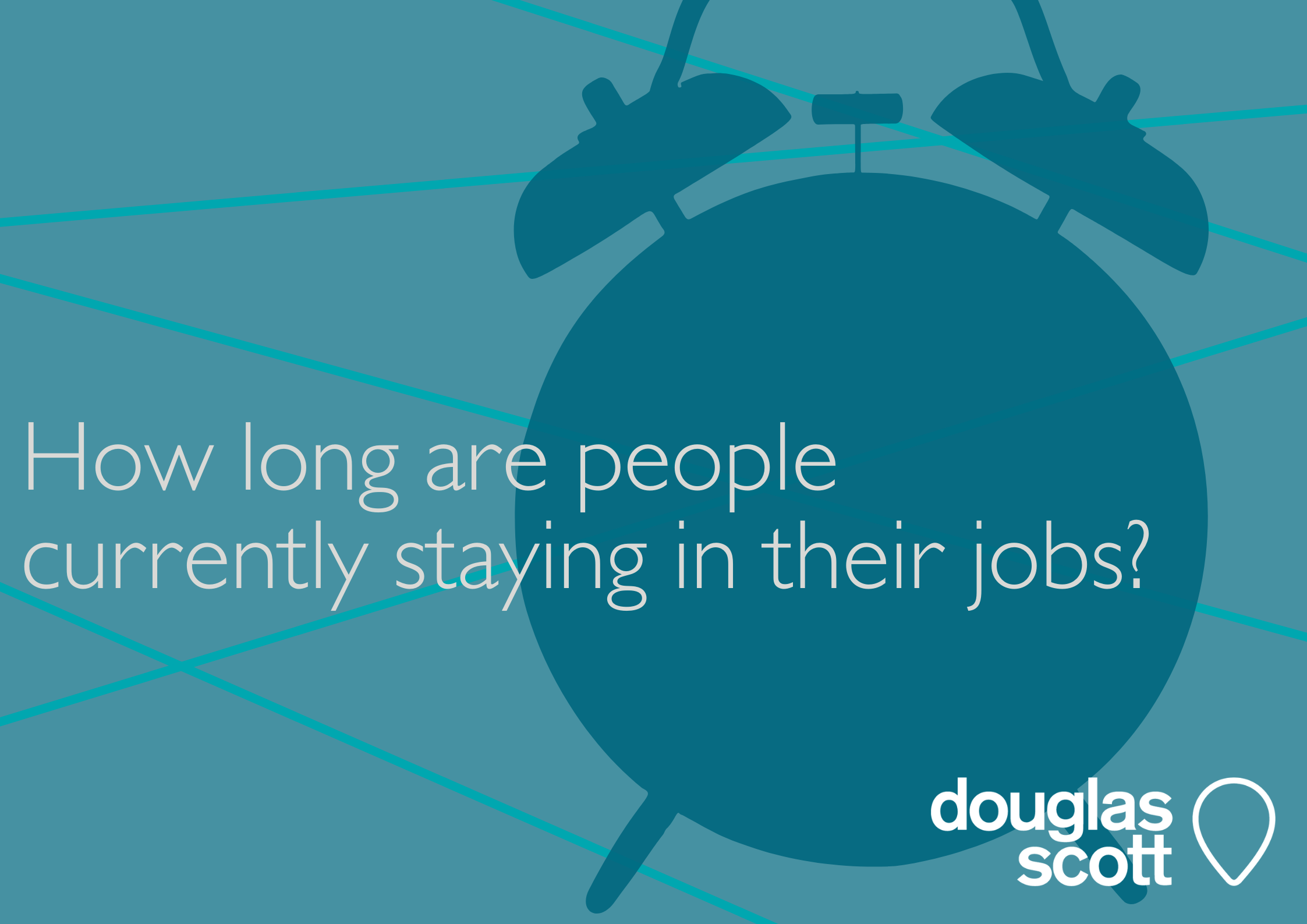How Long are People Currently Staying in Jobs?
Posted in Latest News on 3 Oct 2023

You may have seen our recent Salary Survey from Douglas Scott Legal Recruitment. It details various areas of recruitment interest, ranging from how much people are paid to their primary motivating factors behind leaving a job.
Another area covered by the survey is how long people stay in job roles. We have found some fascinating statistics that seem to point towards people staying in job roles for longer – but also that people are keen not to remain static indefinitely.
The headline figure is how long people are staying in their roles generally. Across the market, we found that the current average for 2023 was four years and five months. This slightly increased over the last couple of years, which were spot on four years. We can draw from this increase that people are perhaps more hesitant to change their jobs, but only maybe by a little bit. To break these results down geographically, the Midlands and Eastern region spent the longest time in roles, with four years and 11 months, with the Southeast behind on four years and eight months. At the other end of the scale, London respondents stayed in roles for around three years and 11 months, about six months under the average. It’s interesting to note that London also had one of the highest turnovers in 2022, so this sector is seen as more transient than others. It’s also interesting to look at the Midlands, which has seen a considerable jump in terms of how long people stay in roles. Last year, the average was three years and nine months – an increase of over a year. Whether it might be that employers are offering more robust benefits and incentives to stay, or more localised factors, it’s difficult to say. However, for the most part, people are looking to stay in roles longer than last year.
Looking at the statistics by age and gender also throws up some exciting statistics. As might be expected, the length of time a person spends in a role increases significantly the older they get, with people 25 and under only spending, on average, three years in a position. By contrast, people aged 58 and over spent just under seven years in a role, which may sometimes be their final position before retirement. People 25 and under may feel more able to make transitions up the career ladder, while those aged above 58 may feel more settled in a role and more unwilling to move. That being said, we found that the three-year range still applied for people up until about the age of 41, so it was clear that people are still willing to move roles, even at what might be seen as a point in life when people should be settling down. Regarding gender, it seems like women are more willing to move first: the average length for women was four years and three months, in contrast to 4 years and seven months on average for men. These results are close, which is a good sign that women are not feeling forced out of roles (a trend seen in other sectors due to a lack of equality) and can progress to the same levels in a job as men before moving on.
Overall, these figures prove interesting, as they show just how long people stay in their job roles, and it may give us a window into why people might be looking to move on after a certain period. We’ll continue monitoring these numbers and see what these trends signal for the market.